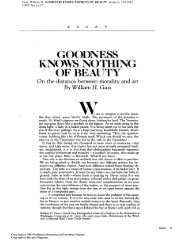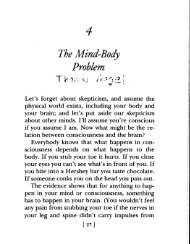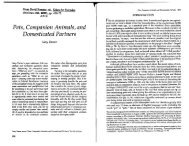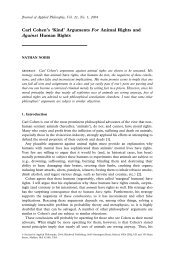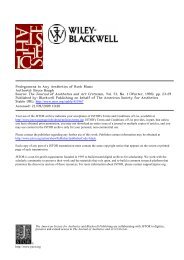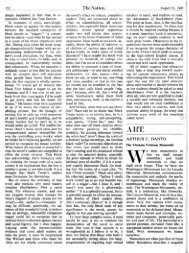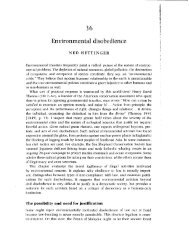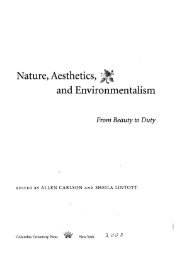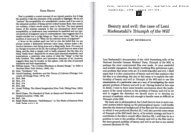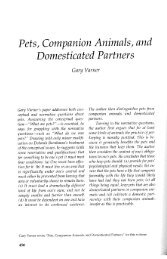Karen Hanson, "How Bad Can Good Art Be?"
Karen Hanson, "How Bad Can Good Art Be?"
Karen Hanson, "How Bad Can Good Art Be?"
- No tags were found...
Create successful ePaper yourself
Turn your PDF publications into a flip-book with our unique Google optimized e-Paper software.
<strong>How</strong> bad can good art be<br />
is conceived to be responsive only to brute reality, to be utterly independent<br />
of human desires, needs, and efforts. 20 Scientific truths may<br />
be uncovered because of human efforts, out of human needs and<br />
desires, but, on this picture, we pursue and discover, we cannot<br />
make, the truth. We do, of course, make art. It is wholly a product of<br />
our desires, needs, efforts, skill, intelligence, and so on. If there is<br />
such a thing as free will, then art, perhaps more than anything else,<br />
is made freely and willfully. Why should it not be a candidate for<br />
moral judgment<br />
If, after all, we are judged for making bombs or making peace, why<br />
can we not be judged for making a painting If we are judged for<br />
telling lies and for telling the truth, why can we not be judged for<br />
telling stories, writing novels If it is now granted that we, and our<br />
choice of activities, may be subject to moral scrutiny, but it is still<br />
insisted that art, the product of our activity, is beyond morality, the<br />
distinction seems desperate. It is, we must note, the nature of peace<br />
and the properties and consequences of bombs that help make our<br />
efforts to construct one or the other so appropriately subject to moral<br />
evaluation. Furthermore, the lies we tell, not just we in telling them,<br />
may be judged from the moral point of view: this lie, because of its<br />
superficial content and its function as a routine social gesture, is not<br />
so bad; that one, because of its cruelty and its significance, is despicable.<br />
In the end, though, as at first glance, it is the obvious fact that<br />
people make art, that art making is a human activity, that makes it<br />
inappropriate to try to isolate the realm of art from all prospect of<br />
moral evaluation. 2 1<br />
Accepting the idea that the content of art may be subject to moral<br />
evaluation, we may still disagree about the force and operation of<br />
such evaluation and, in particular, about its import for aesthetic judgment.<br />
There are at least two leading possibilities: art may be subject<br />
to moral assessment, but ethical judgments always remain distinct<br />
from aesthetic ones; or moral considerations are sometimes properly<br />
invoked in aesthetic criticism.<br />
Defending the first view, and arguing that the values of ethics and<br />
aesthetics (and all other "value areas") are "different and independent,"<br />
William Gass admits:<br />
In life, values do not sit in separate tents like harem wives; they mix and<br />
mingle .... A dinner party, for example, will affect the diners' waists, delight<br />
or dismay their palates, put a piece of change in the grocer's pocket, bring a<br />
gleam to the vintner's eye .... And if I, Rabbi <strong>Be</strong>n Ezra, find myself seated<br />
next to Hermann Goering, it may quite put me off the quail- quail which the<br />
217



